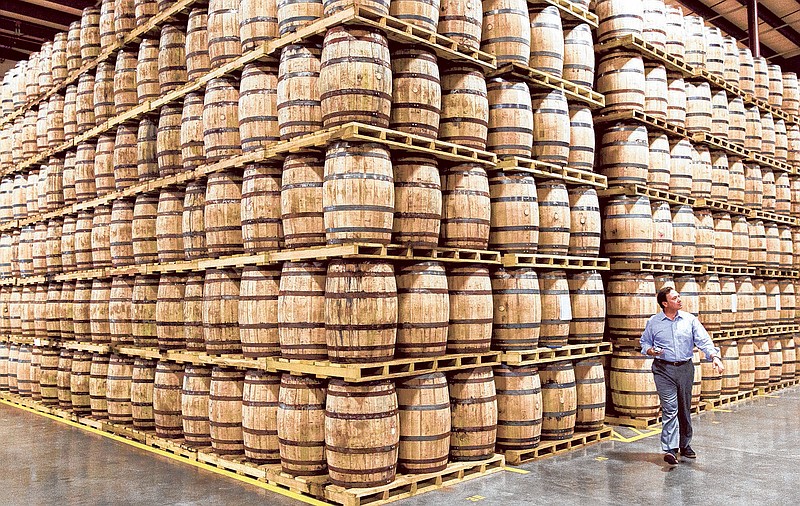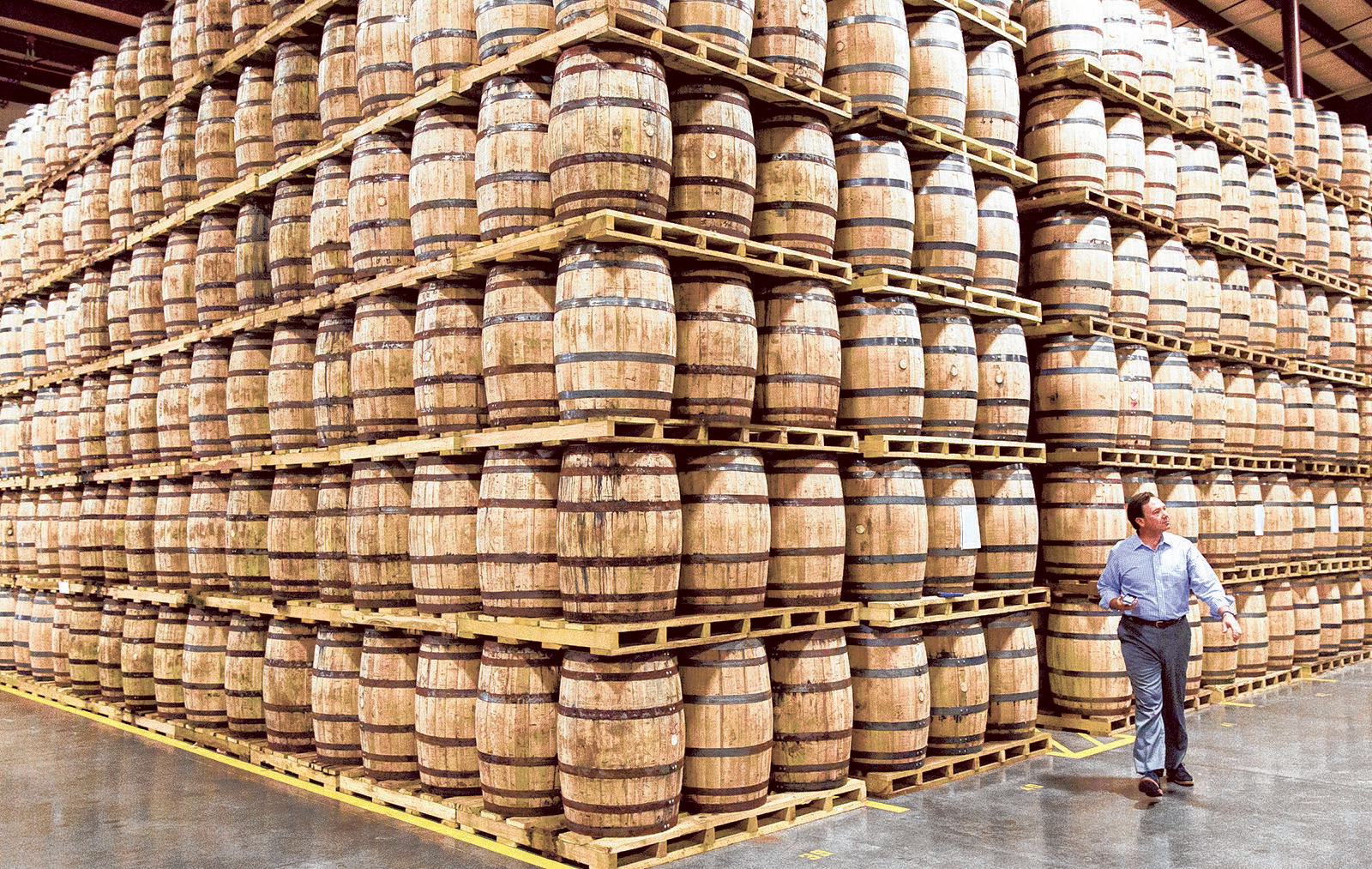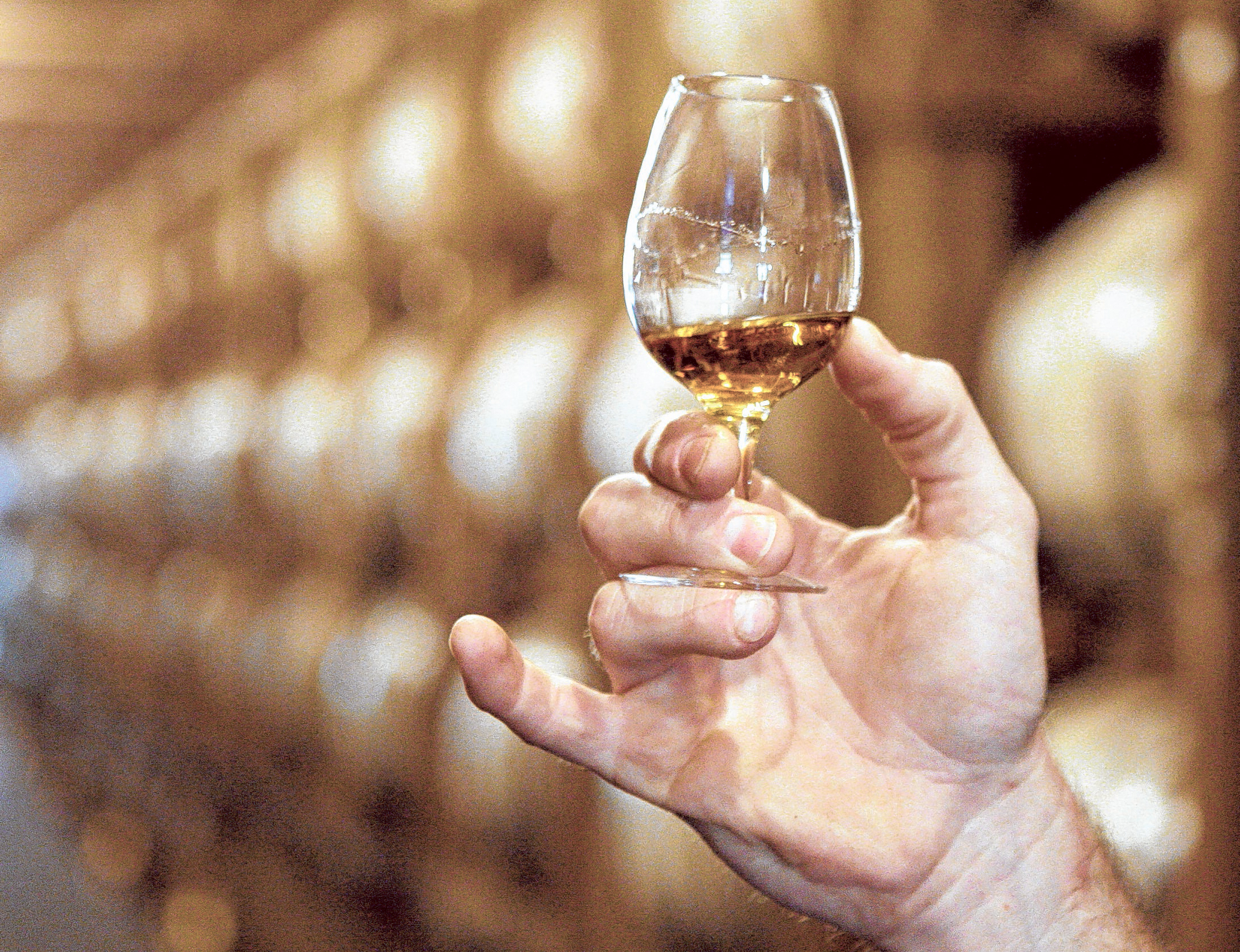Mixed together, U.S. revenues for bourbon and Tennessee whiskey rose by 9.6 percent to $2.7 billion last year, the Distilled Spirits Council said last week. Domestic volume shot up 7.4 percent to 19.4 million cases.
"Consumers in the U.S. and around the globe are increasingly enjoying bourbon and Tennessee whiskey because of their distinctive flavor profiles and authentic American heritage," said the council's chief economist, David Ozgo.
Industrywide, supplier sales for the U.S. distilled spirits industry were up 4 percent to $23.1 billion last year, the council said. Total U.S. volume growth increased 2.2 percent to 210 million cases, it said.
Irish Whiskey and Single Malt Scotch continued their rapid growth with volume growth of 9.1 percent and 6.4 percent, respectively, the council said. Cognac volumes shot up 11.4 percent, while tequila volumes rose 5 percent. Overall vodka volumes went up 1.6 percent.
The comeback of the cocktail culture along with the popularity of flavored whiskeys and premium products drove the growth, officials said. Some have called it the "Mad Men Effect" after the popular TV series where cocktails are a regular part of both work and entertainment for the star characters.
The spirits industry also continues to drain market share from beer in the United States. Last year, liquor's share of the total alcohol market rose to 35.2 percent of sales, while beer fell to 47.8 percent. Wine remained flat with 17 percent of the alcohol market.
Last year was the fifth consecutive year when the spirits industry grew faster than beer consumption. Beer has lost nearly 10 percent of its market share since 1999, while spirits have gained 7 percent and wine has gained about 3 percent, according to the Distilled Spirits Council.
"Consumer interest in industry innovations and premium products from distilled spirits producers of all sizes contributed to another year of steady growth in 2014," said council President and CEO Peter H. Cressy.
In another good sign for producers' bottom lines, the category's super premium products notched 19.2 percent gains in both revenues and volumes - by far the biggest increases across price spectrums. Super premium products age longer and fetch higher prices.
"The phenomena of flavor whiskeys in the U.S. appears to be in its infancy," Brown-Forman Chief Financial Officer Jane Morreau said last year.
Jack Daniels' star product: Tennessee Honey, doubled its sales in 2012 and rose another 36 percent in 2013. The company has yet to report 2014 results.
The industry lumps bourbon and Tennessee whiskey into one category. Both are produced in the same way and with similar ingredients. The main difference is that Jack Daniel's and other Tennessee whiskeys are charcoal mellowed before going into the barrel to age, while bourbon isn't.
Kentucky produces 95 percent of the world's bourbon supply, according to the Kentucky Distillers' Association. More than 5.3 million barrels of bourbon are maturing in Kentucky, outnumbering the state's population.
The biggest and best known Tennessee whiskey is Jack Daniel's, which operates its distillery in Lynchburg, Tenn.
But the global appetite for Tennessee whiskey has also helped propel other whiskey ventures in the state, including the Chattanooga Whiskey Co.. The locally owned company helped convince the Tennessee Legislature and Hamilton County voters in 2012 to allow whiskey to again be distilled in Hamilton County for the first time since Prohibition started in 1920.
Chattanooga Whiskey, which currently is made in Indiana by MGP/LDI, should soon begin to be distilled in downtown Chattanooga. The company recently began installing a distillation system at its first local distillery site across from the Chattanooga Choo Choo on Market Street to become the first distillery in Chattanooga since Prohibition.
The venture is tapping into the growing demand for Tennessee whiskey and bourbon around the world. Last year, exports of whiskey and bourbon topped $1.02 billion, the council said. Those exports surpassed $1 billion for the first time in 2013, it said.
The latest sales figures underscore Kentucky bourbon's emergence as a "global force" and one of the state's "most prized economic engines," said Eric Gregory, president of the Kentucky Distillers' Association.
"This is just further proof that we are on the cusp of a golden age of Kentucky bourbon," he said. "This is a renaissance we haven't seen in generations, and possibly in the entire history of our signature spirit."
Overall, American spirits exports in 2014 grew by a projected 3.7 percent to $1.56 billion, the council said. It would mark the fifth straight year of record exports.
"Despite the strong dollar headwinds in the second half of the year, premium American spirits are finding new audiences globally, in both traditional and emerging markets," said Christine LoCascio, the council's senior vice president for international trade.
The council said the export figures are based partly on data from the U.S. International Trade Commission.
Canada was projected as the biggest market for American distilled spirits, based on dollar value, the council said. It was followed by the United Kingdom, Germany, Australia and France. The biggest percentage growth occurred in Brazil, followed by the Dominican Republic, Bahamas, Israel and United Arab Emirates.


